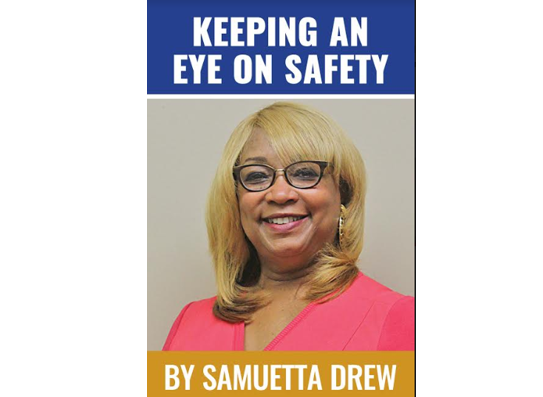By Samuetta Hill Drew
The primary media focus over the past few months relative to the COVID – 19 coronavirus has been elderly adults with underlying health conditions such as heart disease, asthma, diabetes, etc. These individuals were and continue to be at a much higher risk of having less than favorable outcomes if they contract COVID – 19. Our national fatality numbers have unfortunately supported this concern.
Coronavirus on the surface to an untrained scientific or medical person appears to have taken many different turns as experts continue to learn more about this virus and how it infects the human body. Recent media reports are now showing us how this virus is infecting children of different age groups.
This is equally as concerning for many reasons, but one is children typically do not take nor understand how and why to take the safety measures necessary to remain safe. Older youth often believe because of their age and usually healthy bodies with typically no underlying health conditions they are invincible.
This is far from the truth as well as disturbing on many different levels. Therefore, reasonable adults are vital in this safety and well-being preventive equation on child safety in the fight against COVID – 19.
Over the next few weeks, the articles will review safety measures to help keep children safe regardless of their age groups. The Centers for Disease Control and Prevention (CDC) will be the basic information source for much of the content contained in these articles.
The first steps in helping to protect children from getting sick and stop the spread of COVID – 19 is by doing the same things everyone else should do to stay healthy. It is important to teach your children to do the same such as:
• Washing one’s hands often using soap and water or alcohol-based hand sanitizer (make sure they do not rub their eyes because it can cause irritation). Teach them to wash their hands for 20 seconds by encouraging them to sing the Happy Birthday song to themselves, a stuffed animal, doll, or a family member, even though it may not be anyone’s actual birthday. Turn it into a hand washing game. The song Twinkle Twinkle Little Star works just as well. At least two stanzas of either song should be sung for your 20 seconds.
• Explaining to them keeping their hands clean is one of the best ways to help keep them safe and because of your love for them their safety is your highest priority. Remember children learn by example, so adults must model good hand washing behavior by keeping your hands clean after touching certain surfaces.
• Avoiding people who are sick (coughing and sneezing). Teach them how to cough and sneeze inside the bend of their elbows and not inside their hands. Help them remember to wash their hands afterwards.
• Parents or older children should clean and disinfect high-touched surfaces daily (more often if needed) in household common areas such as kitchen tables, countertops, hard-back chairs, doorknobs, light switches, remote controls, handles, desks, toilets, and sinks. These can be daily chores older children can perform in conjunction with their parents. Naturally cleaning hands immediately afterwards should be a part of this process.
• Parents should launder items including washable plush toys as needed. Follow the manufacturer’s instructions. If possible, launder items using the warmest appropriate water setting and dry items completely.
• Those plastic or other hard surfaced toys which cannot be washed should be cleaned with mild soap and water, then thoroughly rinsed and hand dried. Follow manufacturer’s instructions.
These are some initial first steps in Keeping an Eye on Safety as you identify ways to care for your children’s health and well-being.





